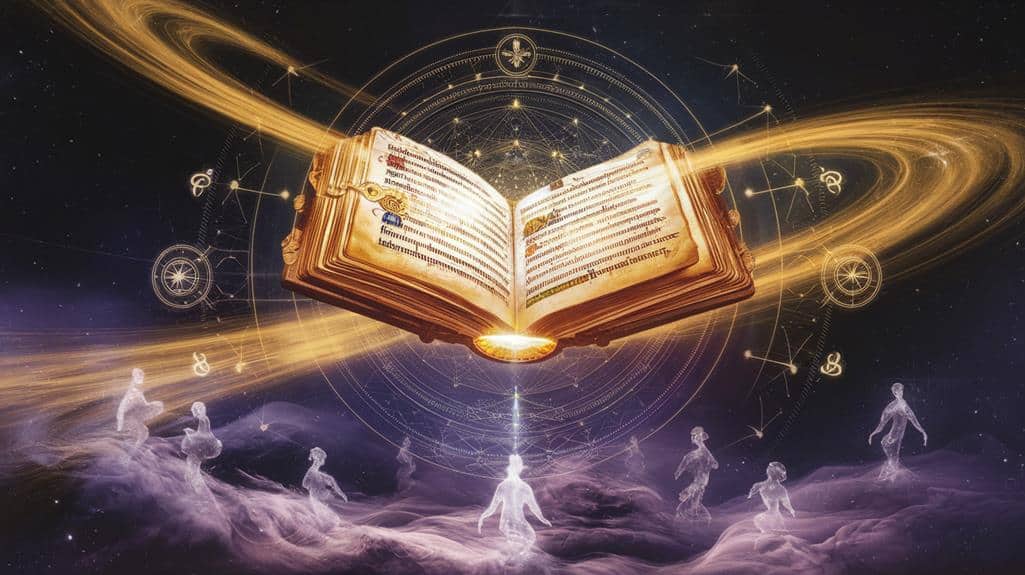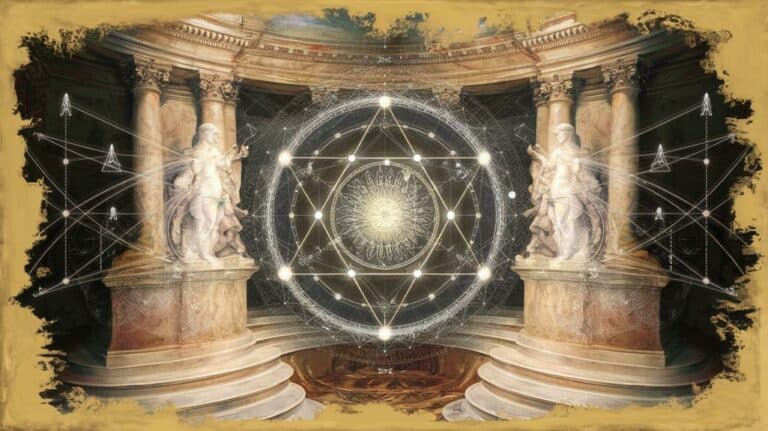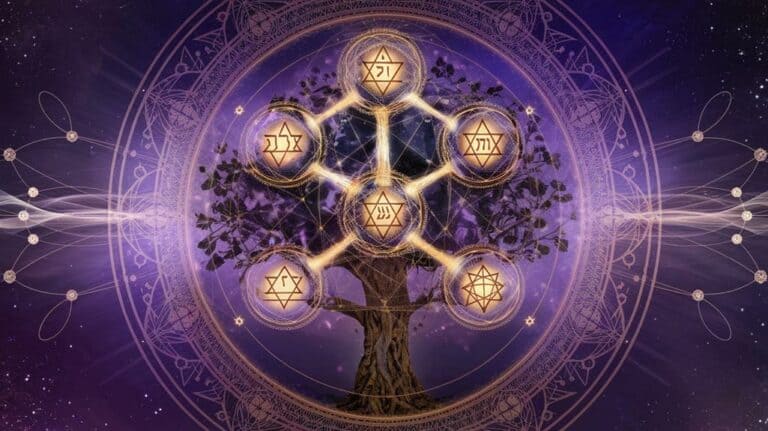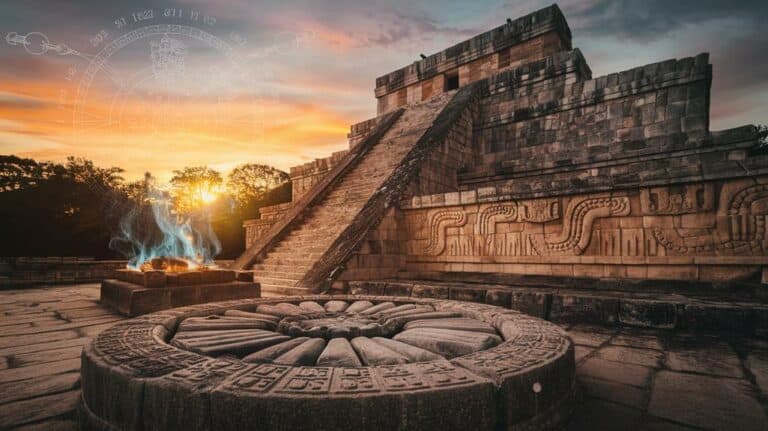Mystical Interpretations of Sacred Texts
When you’ve encountered sacred texts, you’ve likely noticed their apparent simplicity masks deeper revelations waiting to be discovered. You’ll find that mystical traditions across religions don’t simply accept words at face value—they recognize multiple layers of meaning that transform ordinary passages into gateways of spiritual insight. While some might dismiss these interpretive methods as merely symbolic, mystics throughout history have maintained that sacred writings contain coded messages that reveal profound truths about existence, consciousness, and the divine nature of reality. What you’re about to explore could fundamentally shift your understanding of these ancient teachings.
Origins of Sacred Text Mysticism

The quest to uncover hidden meanings in sacred texts emerged alongside the earliest written religious documents. As you explore ancient manuscripts, you’ll find that mystical interpretations arose from humanity’s deep longing to bridge the gap between earthly existence and divine revelation.
You’re walking a path that began when priests in Egypt’s temples sought to decode hieroglyphic wisdom, while Babylonian scholars searched for celestial messages in their cuneiform tablets.
You’ll discover that early mystics weren’t content with literal readings alone – they believed sacred texts contained layers of meaning that could transform your consciousness.
In India’s Vedic traditions, you’d find sages who developed intricate systems of interpretation, revealing cosmic truths within Sanskrit verses. Similarly, Greek philosophers began viewing Homer’s epics as allegories containing profound spiritual wisdom.
This practice of seeking deeper meanings hasn’t remained static – it’s evolved through centuries of contemplative tradition.
You’re inheriting methods developed by Jewish Kabbalists, Christian Desert Fathers, and Sufi masters who’ve each contributed unique approaches to revealing the mysteries hidden within their sacred texts.
Jewish Mystical Practices and Kabbalah
Within Jewish mystical tradition, Kabbalah stands as an intricate system for decoding divine mysteries hidden throughout sacred texts. You’ll discover that Kabbalistic practice isn’t merely about reading texts – it’s about penetrating multiple layers of meaning through meditation, contemplation, and rigorous study of mystical symbols.
Through these sacred pathways, you’re invited to explore the nature of creation, consciousness, and your relationship with the divine.
As you investigate deeper into Kabbalah, you’ll encounter the Tree of Life (Etz Chaim), a fundamental diagram mapping the emanations of divine energy through ten interconnected spheres called Sephirot. Each sphere represents different aspects of God’s manifestation, from the highest domain of pure divine will to the earthly kingdom where you experience physical reality.
You’ll find that Jewish mystics have developed specific practices around Hebrew letters and divine names, believing they contain powerful cosmic forces. Through techniques like gematria, where letters correspond to numbers, you’re able to reveal hidden meanings within sacred texts.
These practices aren’t just theoretical – they’re meant to transform your consciousness and help you understand your role in the ongoing work of creation.
Sufism and Quranic Understanding
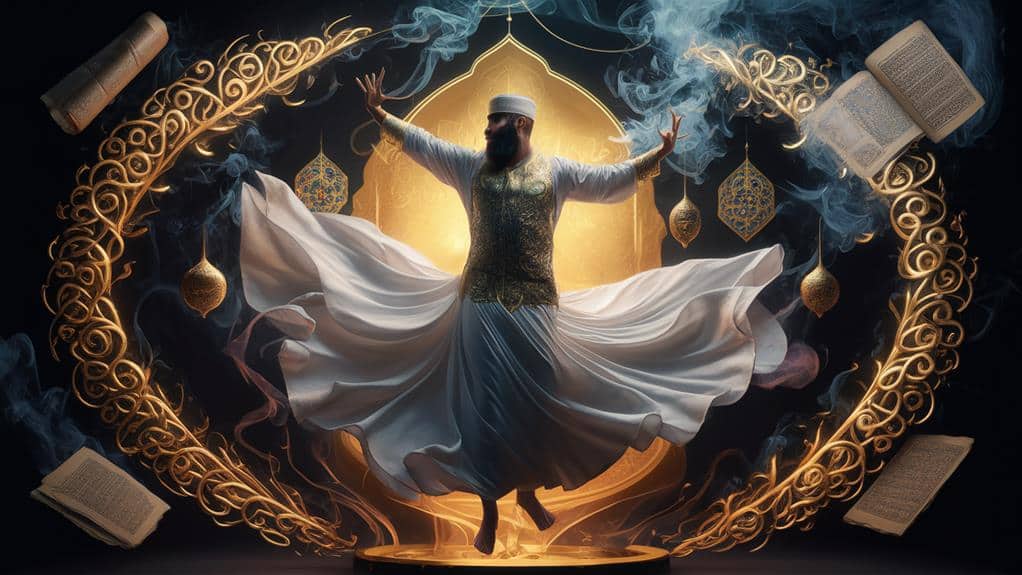
Mystics within Sufi tradition approach Quranic interpretation through the lens of direct spiritual experience, seeking to uncover layers of hidden meaning beyond literal understanding.
You’ll find that these seekers dive beneath surface meanings to discover what they call the “ocean of truth,” where each verse holds multiple levels of significance. Through practices like dhikr (remembrance) and contemplative meditation, you’re invited to experience the text’s transformative power firsthand.
When you explore Sufi interpretations, you’ll encounter the concept of ta’wil – the art of spiritual hermeneutics that reveals the text’s esoteric dimensions.
You’re encouraged to look beyond the apparent meaning, as Sufis believe the Quran contains both an outer shell (zahir) and an inner kernel (batin). This approach isn’t meant to replace traditional interpretations but rather to complement them, offering you a deeper connection to the divine through personal revelation.
You’ll discover that Sufi masters often speak of “tasting” (dhawq) spiritual truths rather than merely understanding them intellectually.
They’ll guide you to see how each verse can become a mirror, reflecting your own spiritual journey and inner states.
Christian Mystics Through History
Similar to their Sufi counterparts, Christian mystics throughout history have sought intimate communion with God through contemplative practices and direct spiritual experience.
You’ll find this tradition emerging with desert fathers like Anthony the Great and flowing through medieval luminaries such as Hildegard of Bingen and Julian of Norwich, who’ve left behind profound writings that still resonate today.
When you explore the works of Meister Eckhart, you’ll discover his radical teachings about the divine spark within the soul, while John of the Cross’s “Dark Night of the Soul” illuminates the challenging spiritual journey you might face in seeking union with the divine.
The mystical tradition hasn’t remained static – you’ll see it evolving through figures like Teresa of Ávila, whose “Interior Castle” maps the soul’s journey through seven dwelling places toward ultimate union with God.
In these mystics’ writings, you’ll encounter themes that transcend time: the paradox of finding by losing, dying to live, and emptying to be filled.
They’ve shown that the path to divine understanding often leads through apparent contradictions, inviting you to move beyond conventional religious frameworks into deeper spiritual terrain.
Modern Applications of Ancient Wisdom
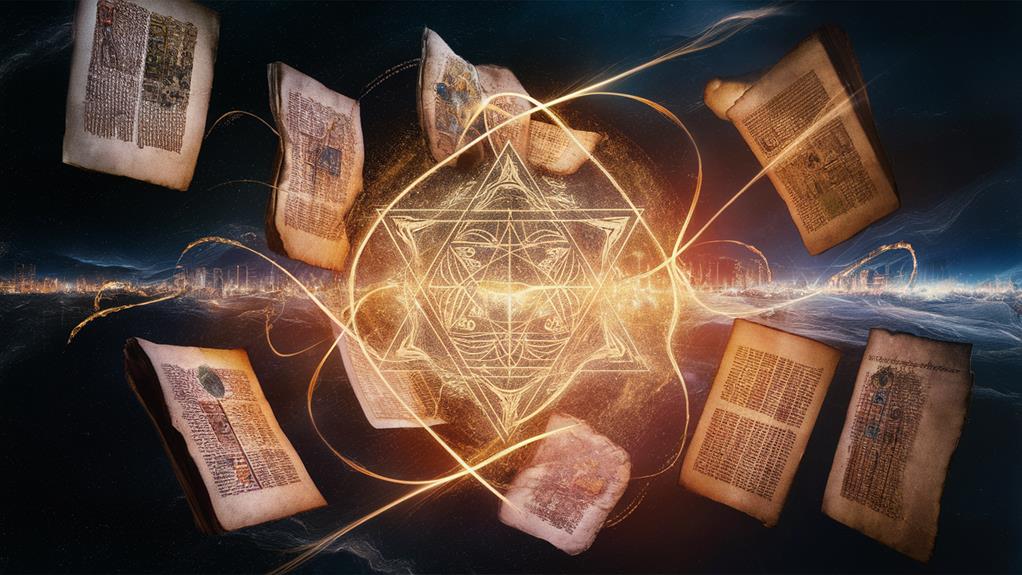
Today’s seekers are finding fresh relevance in mystical traditions, adapting ancient contemplative practices for contemporary life. You’ll discover that timeless wisdom from Judaic Kabbalah, Sufi mysticism, and Christian contemplative practices can illuminate your modern spiritual journey.
These ancient paths offer you profound insights into maneuvering life’s complexities while maintaining inner peace. You can integrate these mystical teachings into your daily routine through practices like lectio divina, where you’ll engage sacred texts not just intellectually, but experientially.
You’ll find that contemplative reading transforms ordinary moments into opportunities for deep spiritual connection. The desert fathers’ teachings on inner silence can help you create sacred space amid life’s constant digital chatter.
You’re inheriting a legacy of mystical interpretation that’s remarkably relevant to contemporary challenges. Whether you’re seeking meaning in professional life or personal relationships, these ancient wisdom traditions offer practical guidance.
Through practices like centered prayer and mindful meditation, you’ll discover that the mystics’ insights into human consciousness and divine connection aren’t relics of the past – they’re living tools for transformation in your modern spiritual journey.



